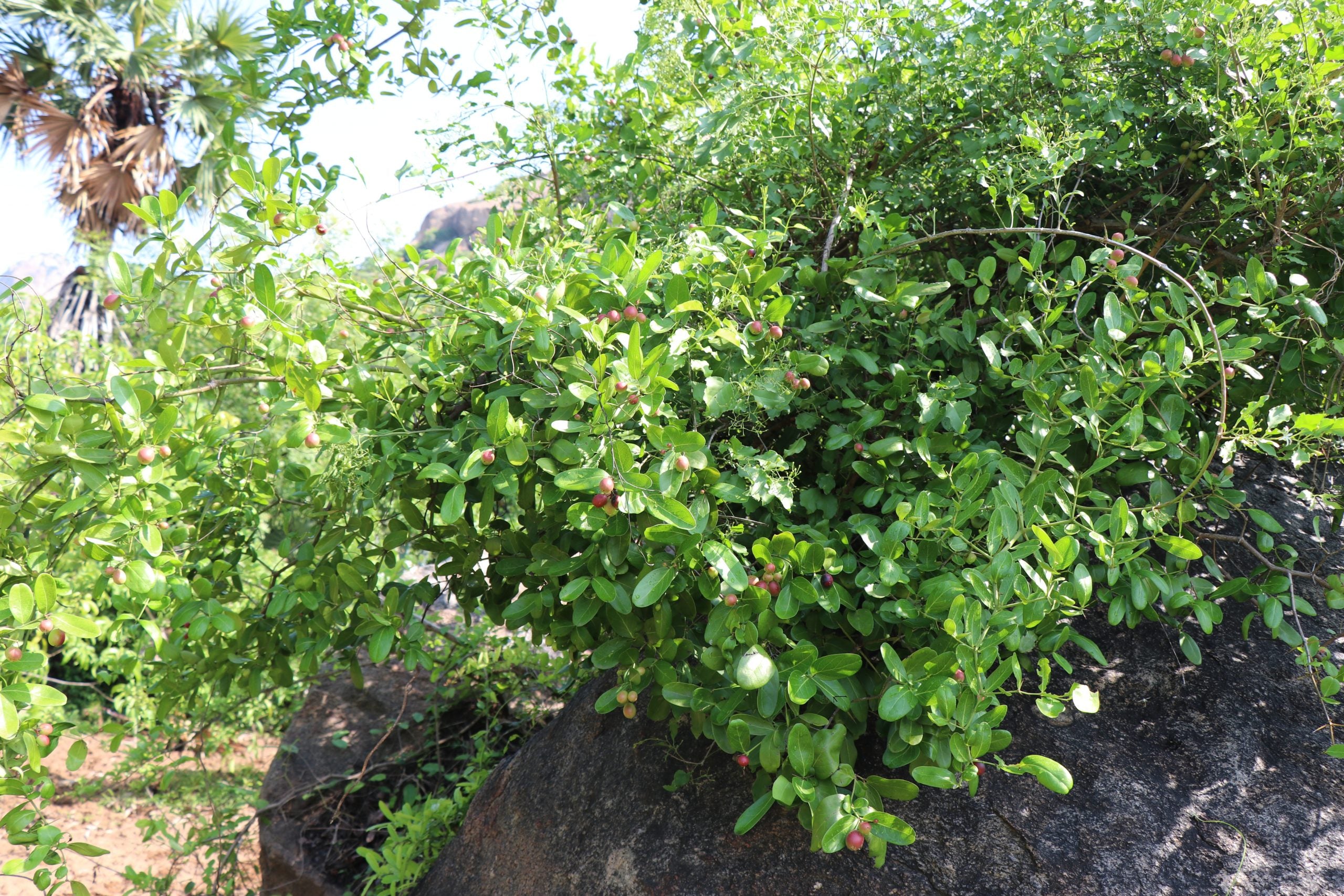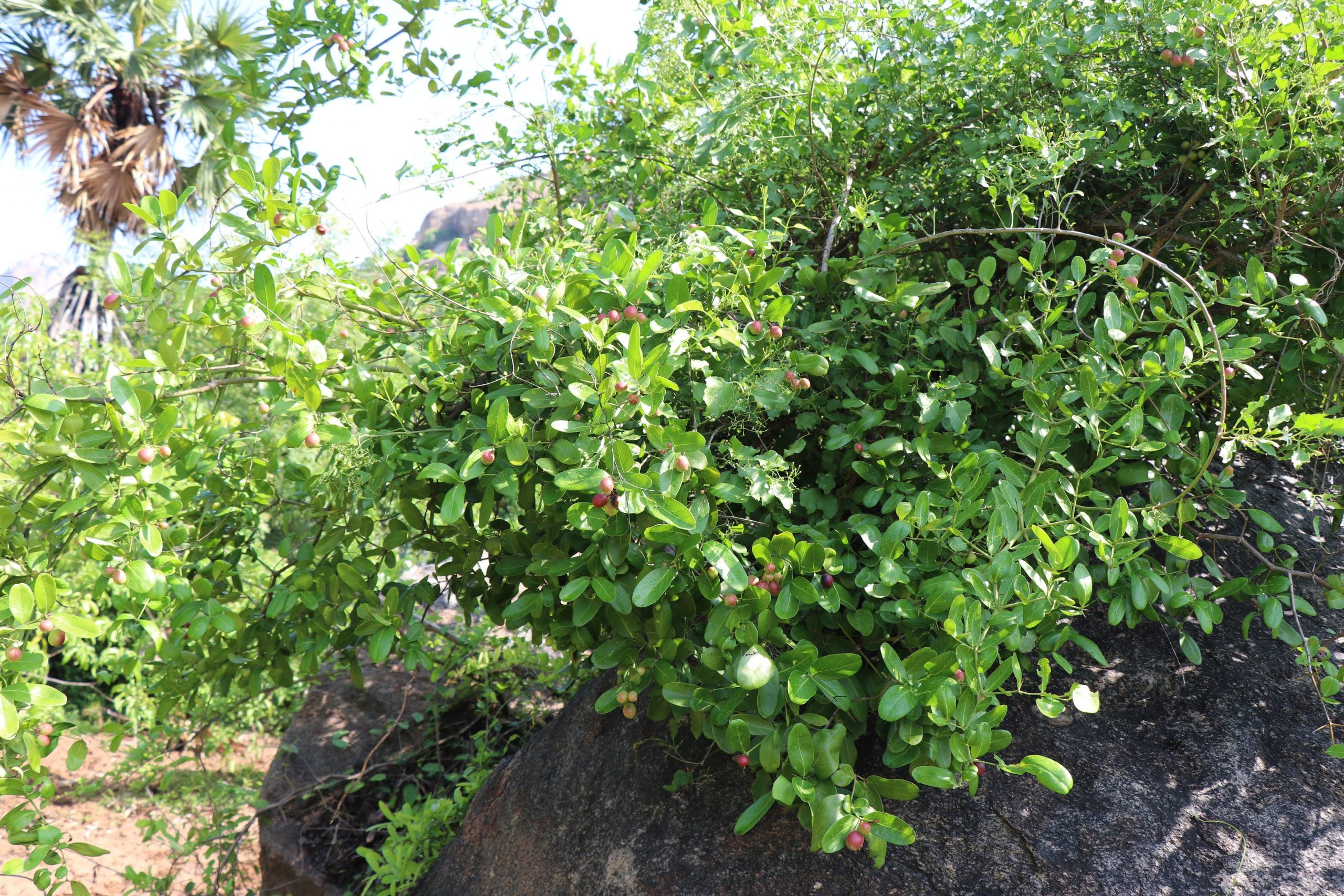Karanda Plant Overview
Carissa Carandas is a drought-resistant plant and it produces a berry sized fruit mainly used as a condiment in Indian pickles and in Ayurvedic medicine and It has various health benefits. Common names in English include Bengal currant, Christ's thorn, Carandas plum and Karanda. It has various names in different languages including Kalakai/Kilaakkaai in Tamil, Karonda in Hindi, Vakkaya in Telugu, Kauai Hannu in Kannada.
This plant grows any kind of soil and it flourishes well in regions with high temperatures. The roots of the plant are heavily branched, making it valuable for stabilizing eroding slopes.
- Common Name: Carissa carandas
- Family: Apocynaceae
- Category: Fruit Plants, Medicinal Plants
Karanda Plant Description
- A very pretty medium to tall shrub 1.5 to 5 m.
- The plant is ornamental and has dark green shiny leaves that is why this plant is called an evergreen plant.
- White flowers are borne in bunches at the ends of branches.
- The stems are smooth and hard.
- Fruits start creamy white. They get a very pretty pink hue as they mature. They stay this way for over a month or two. They then mature to black fruit
- Fruit can be made into pickles, preserved and also candied.
- Plant growth can be quite haphazard. Regular and careful pruning is required to contain it.
- The spines make pruning difficult - but luckily this can be done every alternate year.
Karanda Health Benefits
Karanda can treat acidity, indigestion, fresh and infected wounds, skin diseases, urinary disorders and diabetic ulcer, as well as biliousness, stomach pain, constipation, anemia, skin conditions, anorexia and insanity. Leaf decoction is used to treat fever, diarrhea, and earache. The roots serve as a stomachic, an anthelmintic medicine for itches and also as insect repellents.



